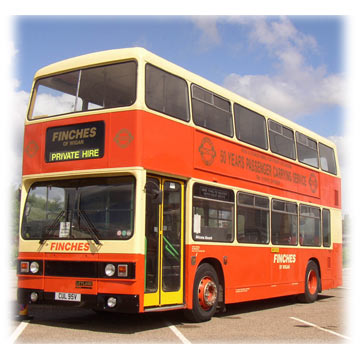The Convenience Bus
How to Reinvigorate Local Bus Services (Page 5)
Contents:
(Continued from previous page)
Internet marketing campaigns of these services should only concentrate on areas where 90% or more of persons have Internet access. In the long term, this medium could be used to include message boards manned by fellow passengers, with forum subjects or sections specific to each route or area. Company sponsored message boards could be moderated by the company's IT department, computer literate bus drivers, or a passengers' representative.
As well as being able to connect effectively with longer distance services, it is important that circular or short distance radial routes should be frequent. In fact more so, due to the length of journey (for example the 409 (Rochdale - Oldham - Ashton-under-Lyne) service compared with the 333 Hurst Circular). Persons would expect the 409 to experience some delay due to traffic on Oldham Road. Though critical of the service's punctuality and reliability, there is the assurance of the 409 being every seven minutes in the daytime other than Sundays. A delay on the 337 is more marked due to the much reduced frequency of this route (every half hour). If a 337 is missing, this is more soul destroying to a passenger who felt they would have walked from Crowhill to Ashton town centre in less time. In these cases, it is just as easy to walk back home to cancel the shopping trip or to book a taxi from their living room.
When Ashton-under-Lyne's first ASDA store opened on Langham Street in 1972, the store, despite having generous car parking provision was within easy distance of the bus stop for the 9 bus to Oldham and Rochdale (or the addition journeys to Thornham). At this point, the number 10 (Dukinfield, Yew Tree) ran every fifteen minutes, all day, with extra journeys for market days at Ashton.
Thirty four years on, the ASDA store, now on Cavendish Road has seen the forerunners of the number 10 (the daytime 41 and evenings and Sunday 339, 340 services) with a much reduced service, boasting an hourly frequency after 1800 hours, and a daytime half hourly frequency. The car park is three times the size of the previous store's equivalent.
There are now several other superstores within the Tameside area, where the car is King, Queen, Prince, Viscount and Lord rolled into one, with less than attractive locations for bus users. There are now no such thing as extra services for market days. Then there's the other threat to our town centres, online shopping.
Within 34 years, the convenience store, corner shop and traditional market has seen lost market share to the superstore chains. It is no accident to see how this trend coincided with mass car ownership. By the mid 1970s, supermarkets started to favour locations in the outskirts of town. Or they offered out of town locations., by offering food, free parking and petrol in one location. Within that period, bus usage plummeted. In 1972, 520 million journeys were made by bus in the SELNEC area. Recent figures are just under half that, with an estimated 213 million journeys made in 2005.
Mass car ownership has distorted planning laws, to the point road layouts favour the motorist, to the point superstores and businesses have succumbed to greater centralisation. This is an argument which lies outside the remit of this paper.
The convenience bus should endeavour to serve all community facilities effectively including hospitals and high traffic generating private sector developments including superstores and retail parks. Most importantly, it should link the passenger from his or her bus stop close to home with a fast efficient link with the main town centre, at an agreeable price, without a long wait between journeys.
Stuart Vallantine,
Friday, 31st March 2006 (revised 28th October 2007).
